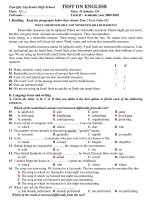- Trang chủ >>
- Mầm non - Tiểu học >>
- Lớp 1
TIME for kids student reader g1
Bạn đang xem bản rút gọn của tài liệu. Xem và tải ngay bản đầy đủ của tài liệu tại đây (40.65 MB, 97 trang )
Acknowledgments
“Bubbles” by Deborah Underwood from Ladybug, Magazine for Young Children Reprinted by permission of Carus Publishing
Company, Cricket Magazine Group.
“The Caterpillar” by Douglas Florian Copyright © 1994. Used by permission.
“Hamster Hide-and-Seek” by Avis Harley Text Copyright © 2011. Reprinted by permission of HarperCollins Publishers.
“Loose and Limber” from WHISKERS AND RHYMES by Arnold Lobel. Text Copyright © 1985 by Arnold Lobel. Reprinted by
permission of HarperCollins Publishers.
“Cloud Parade” by Kristen M. Camiolo from Ladybug, Magazine for Young Children. Reprinted by permission Carus Publishing
Company, Cricket Magazine Group.
“Sunflakes” from COUNTRY PIE by Frank Asch. Text Copyright © 1979 by Frank Asch. Reprinted by permission of HarperCollins
Publishers.
“Sarah Enters a Painting” by Susan Katz. Reprinted with the permission of Simon and Schuster Children’s Publishing Division.
From the autograph album by Lillian Morrison Copyright © 1960 by The Owens Publishing Company. Used by permission of
Marian Reiner for the Author.
Photography Credits
Book Cover: (c) David Young-Wolff/Alamy; (tr) PhotoLink/Getty Images
Contributor
© Time Inc. All rights reserved. Versions of some articles in this edition of TIME For Kids
originally appeared in TIME For Kids or timeforkids.com.
B
Published by Macmillan/McGraw-Hill, of McGraw-Hill Education, a division of The McGraw-Hill Companies, Inc.,
Two Penn Plaza, New York, New York 10121.
Copyright © 2011 by The McGraw-Hill Companies, Inc. All rights reserved. No part of this publication may be
reproduced or distributed in any form or by any means, or stored in a database or retrieval system, without the
prior written consent of The McGraw-Hill Companies, Inc., including, but not limited to, network storage or
transmission, or broadcast for distance learning.
Printed in The United States of America
ISBN: 978-0-02-207793-8
MHID: 0-02-207793-6
1 2 3 4 5 6 7 8 9 10 WEB 13 12 11 10 09
Issue 1........................................................ 5
Retell
Photographs and Captions
Context Clues
Issue 9...................................................... 53
Main Idea and Details
Charts
Context Clues
Issue 2.......................................................11
Main Idea and Details
Maps
Context Clues
Issue 10.................................................... 59
Main Idea and Details
Signs and Symbols
Context Clues
Issue 3...................................................... 17
Compare and Contrast
Diagrams
Context Clues
Issue 11.................................................... 65
Author’s Purpose
Charts
Context Clues
Issue 4...................................................... 23
Author’s Purpose
Charts
Context Clues
Issue 12.................................................... 71
Retell
Photographs and Captions
Context Clues
Issue 5...................................................... 29
Main Idea and Details
Lists
Context Clues
Issue 13.................................................... 77
Compare and Contrast
Diagrams
Context Clues
Issue 6...................................................... 35
Author’s Purpose
Photographs and Captions
Context Clues
Issue 14.................................................... 83
Compare and Contrast
Signs and Symbols
Context Clues
Issue 7...................................................... 41
Main Idea and Details
Diagrams
Context Clues
Issue 15.................................................... 89
Main Idea and Details
Photographs and Captions
Context Clues
Issue 8...................................................... 47
Main Idea and Details
Maps
Context Clues
Contents
Issue 1
A Green
School
See the otter?
Retell • Context Clues • Photographs and
Captions
(c) Peter Weimann/Animals Animals - Earth Scenes; (tr) Bridget Barrett
It lives at the pond.
So do other animals.
It’s a
Wet and Dry
World!
A1TFK_TXNA_I1FP_RD11.indd 5
1/20/09 10:58:37 AM
Pond Life .......................................................... 6
Earth Helpers ................................................... 8
Leave it to Beavers DIAGRAMS ......................... 10
Issue 2
Main Idea and Details • Context Clues • Maps
World
Water Day
(c) Chloe/Galbe.com; (tr) Stockdisc/PunchStock
Getting over the Hump .................................. 12
Not a Drop to Drink........................................ 14
Bubbles POETRY ............................................... 16
Many children in Africa had
no books. Camels brought
the books to the children!
A1TFK_TXNA_I2FP_RD11.indd 11
1/26/09 9:48:58 AM
Issue 3
Compare and Contrast • Context Clues
• Diagrams
Helping
Out in
the Park
L ADY BUGS
GROW UP
(c) Yves Lanceau/NHPA; (tr) NPS
These big bugs
begin as eggs.
Then they change.
Find out how!
A1TFK_TXNA_I3FP_RD11.indd 17
1/20/09 11:03:59 AM
A Ladybug’s Life ............................................. 18
Giving Time for the Common Good ............. 20
The Caterpillar POETRY .................................. 22
Issue 4
Author’s Purpose • Context Clues • Charts
(c) Steve Satushek/Riser/Getty Images; (tr) Jorge Uzon/Corbis
Colorful
Veggies!
Be Happy and Healthy!
Run, play, and eat well. You will
flip for this healthy way of life!
A1TFK_TXNA_I4FP_RD11.indd 23
1/20/09 11:07:50 AM
Eat Well, Feel Well ........................................ 24
Orange You Glad? ......................................... 26
Climb the Pyramid DIAGRAMS ......................... 28
Issue 5
Main Idea and Details • Context Clues • Lists
(c) DLILLC/Corbis; (tr) Jim West
Good
Citizens
Sharing with Others ...................................... 30
Thanks, Mom and Dad .................................. 32
Hamster Hide-and-Seek POETRY .................... 34
Elephant families are close.
So are other animal families.
A1TFK_TXNA_I5FP_RD11.indd 29
1/16/09 2:20:56 PM
Issue 6
Author’s Purpose • Context Clues
• Photographs and Captions
Rain
Forest
Gifts
Welcome
(c) Kevin Schafer/Corbis; (tr) Linny Morris Cunningham/Jupiter Images
to the
Rain Forest
The rain forest is
a colorful place.
Explore it with us.
A1TFK_TXNA_I6FP_RD11.indd 35
1/20/09 3:06:51 PM
The Forest Roof ............................................. 36
Rain Forests: From Soup to Nuts .................. 38
Life in the Rain Forest DIAGRAMS ................... 40
Issue 7
Main Idea and Details • Context Clues
• Diagrams
(c) Jorge Gonzalez/The Field Museum; (tr) image broker/Alamy
Make
a Move
Found!
Scientists found bones of a dinosaur.
It may have looked like this.
A1TFK_TXNA_I7FP_RD11.indd 41
1/23/09 2:42:40 PM
Digging for Bones ......................................... 42
Animals on the Move .................................... 44
Loose and Limber POETRY .............................. 46
Issue 8
Main Idea and Details • Context Clues • Maps
(c) Dennis MacDonald/PhotoEdit; (tr) David Ball/Corbis
Windy
Places
A1TFK_TXNA_I8FP_RD11.indd 47
Wind makes things move.
It fills sails and pushes a big
boat. What else can it do?
1/20/09 3:07:41 PM
Wow! Wind Works! ...................................... 48
Blow, Wind, Blow! ........................................ 50
Cloud Parade POETRY ..................................... 52
Issue 9
Main Idea and Details • Context Clues
• Charts
(c) Gerard Lacz/FLPA/Bruce Coleman; (tr) Image Source/Getty Images
Water
Mystery
See Me in t h e S ea !
I am a dolphin.
I see many animals in the ocean.
Meet some of them!
A1TFK_TXNA_I9FP_RD11.indd 53
1/23/09 2:44:12 PM
Sunny Side Up................................................ 54
Where Does the Water Go? .......................... 56
Sunflakes POETRY ........................................... 58
Issue 10
(c) David Grubbs, Billings Gazette/Wide World Photos/AP Images; (tr) Murray, Patti/Animals Animals - Earth Scenes
What Is
for Dinner?
Wise
as an
Owl
This is an owl. It is a bird. “Whoo,”
it says. Find out more inside!
A1TFK_TXNA_I10FP_RD11.indd 59
1/23/09 2:45:45 PM
Main Idea and Details • Context Clues
• Signs and Symbols
Whoo’s a Wonderful Bird? ........................... 60
Food for Whoo? ............................................ 62
Growing and Changing CHARTS ..................... 64
Issue 11
Author’s Purpose • Context Clues • Charts
American
Symbols
(c) Juice Images Limited/Alamy; (tr) Adam Jones/Getty Images
Best
of the
U.S.
Prize Pets........................................................ 66
All for America! ............................................. 68
Lady Liberty DIAGRAMS ................................... 70
For many people, the family
dog is always “the best.”
A1TFK_TXNA_I11FP_RD11.indd 65
1/26/09 9:50:49 AM
Issue 12
(c) Tom Stewart/Corbis; (tr) Dennis Brack/Black Star/Newscom
Dollars
and Cents
This boy made money selling
lemonade. What should he do
with the money?
A1TFK_TXNA_I12FP_RD11.indd 71
1/26/09 9:33:42 AM
Retell • Context Clues • Photographs and
Captions
Money Goes Around ..................................... 72
How Money Is Made ..................................... 74
U.S. Coins CHARTS ............................................ 76
Issue 13
(c) NASA; (tr) FPG/Getty Images
Now
and Then
Read about the
shuttle’s trip.
A1TFK_TXNA_I13FP_RD11.indd 77
2/5/09 4:24:27 PM
Compare and Contrast • Context Clues
• Diagrams
Things Change .............................................. 78
What a Trip! .................................................. 80
The Space Shuttle DIAGRAMS ......................... 82
Issue 14
Compare and Contrast • Context Clues
• Signs and Symbols
Amazing
Museums
History
Weaver
Wild About Museums ................................... 84
A Basket Maker ............................................. 86
Sarah Enters a Painting POETRY ..................... 88
(c) James Poulson/Daily Sitka Sentinel; (tr) Richard Cummins/Corbis
Teri Rofkar makes
baskets. So do many
Native Americans.
A1TFK_TXNA_I14FP_RD11.indd 83
2/5/09 4:26:52 PM
Issue 15
It’s
Sports Time!
Being a
(c) Tim Shaffer/Reuters/Corbis; (tr) Brian Bahr/Getty Images
Baseball
Star
Layson Aliviado played in the
Little League World Series.
A1TFK_TXNA_I15FP_RD11.indd 89
2/5/09 4:28:33 PM
Main Idea and Details • Context Clues
• Photographs and Captions
Get Ready, Get Set, Go! ................................ 90
Play Ball! ........................................................ 92
From the autograph album POETRY .............. 94
A Green
School
See the otter?
(c) Peter Weimann/Animals Animals - Earth Scenes; (tr) Bridget Barrett
It lives at the pond.
So do other animals.
It’s a
Wet and Dry
World!
Pond Life
Ponds are places to row a boat or to swim.
We can hike near them. We can fish in
them. Ponds are also homes for many
animals. They live in and out of the water.
Time For Kids
Ron Sanford/Photo Researchers
6•
Kent Foster/Photo Researchers
In the afternoon,
a swan swims.
Its long neck ducks
under the water.
This mom finds
plants for its babies
to eat.
Gary Meszaros/Photo Researchers
In the morning, a dragonfly
flies in the air. It flies over
the pond and looks for
bugs to eat.
In the evening,
a raccoon races.
It stays up at night.
It finds plants and
animals to eat.
Gay Bumgarner/Alamy
Animals and plants live in, on, and by
the pond. This heron eats bugs and frogs.
It can trap a bug as the bug creeps on a
big lily pad. The pond is a good place to
find food.
neck that stretches
out or tucks in
webbed feet
hard, flat shell
Karen Beckhardt
Issue 1
•7
Goodwillie School is in Michigan. It is a
green school. No, it is not painted green!
Kids work together to help the environment.
Kids then go outside.
Children in green schools
recycle glass and plastic
bottles after lunch. By
doing this, new products
can then be made.
Courtesy Goodwillie Environmental School
8•
Time For Kids
Bridget Barrett
Kids reuse and recycle.
Boys and girls do not waste
things here. During class,
they find ways to reuse
things. Brett recycles a
plastic bag to make a kite.
Bridget Barrett
Children learn about plants and
animals. After class, they go to the
park. They discuss, or talk about,
what they see.
David Coulson
A green school is good for Earth.
Green schools use much less power
and light than other schools. Green
schools can save money. The money
that is saved can help the school.
Issue 1
•9
A beaver likes to build a dam in a river.
How does it do this?
First, it puts sticks at the very bottom of
the river. Then, the beaver adds stones and
leaves. Soon, the dam blocks the river and
makes a pond. The beaver builds a house,
or a lodge, in the pond.
Here is a picture of a pond. It shows where
a beaver lives.
(c) Robert Glusic/Getty Images; (b) Mike Maydak
lodge
den
entrance
food
dam
10
(c) Chloe/Galbe.com; (tr) Stockdisc/PunchStock
World
Water Day
Ma
Many
any
a
ny children in Africa had
o books. Camels brought
no
the books to the children!
Garissa is a remote, or faraway, village in the
desert in Kenya. Kenya is a country in Africa.
Children who live near Garissa do not have
any books to read. People all over the world
have given books to a special library for
these children.
Cedric Galbe/Galbe.com
The Desert Express
Camels live in this sandy
part of Kenya. They can
carry up to 400 pounds
of books on their backs.
People, on the other hand,
can’t carry that many!
Sally and Richard Greenhill/Alamy
Check Out the Camels
Now camels carry books to
towns near Garissa. Where
you live, there are libraries.
People can get to a library
by walking or taking cars,
buses, or trains.
↑ Children in Texas take
out library books.
12 •
Time For Kids
Cedric Galbe/Galbe.com
Books Bring Smiles
Children in Garissa now
have books to read. They
love it when the camel
library comes. In one
town, an 11-year-old boy
takes his time with his
book. “I really want the
book to stay in my head,”
he says.
↑ Camels brought these books.
Children like to read them.
A Look at Kenya
Size: 224,960 square miles
(two times the size of Nevada)
People: 29 million
Ethiopia
Somalia
Kenya
Nairobi
Garissa
Capital: Nairobi
What people speak: English
and Swahili
Where it is: East Africa
Map Key
Capital
City
Karen Minot
Issue 2
• 13
Water covers a lot of Earth.
Still, many people around
the world are thirsty.
Onne van der Wal/Corbis
Not a Drop to Drink
Arctic Ocean
North
America
Pacific
Ocean
Europe
Atlantic
Ocean
Asia
Africa
South
America
Indian
Ocean Australia
Joe Lemonnier
Stockdisc/
PunchStock
World Water Day
Water is in oceans, rivers, lakes,
ponds, and puddles, and even in our
sinks. Yet in many places, people
have no water to drink. So world
leaders chose a day to teach about
it. The day is called World Water
Day. It is on March 22 of each year.
Water, Water Everywhere
Most water on Earth is salty.
You can’t drink it. You can
only drink fresh water. This
picture shows the amount
of fresh water and salt
water on Earth.
14 •
Time For Kids
All Water on Earth
2.5%
fresh water
97.5%
salt water
Charles Rex Arbogast/Wide World Photos/AP Images
What’s Next?
By 2025, there may be eight billion
people on the planet. They will need
more fresh water to drink, to wash in,
and to grow food. World Water Day
makes us think about the importance
of water and how we use it.
Tatan Syuflana/Wide World Photos/AP Images
Water Wise
Kids around the world help
out on World Water Day.
They make posters. They
teach others to save water
by taking short showers and
watering plants at night.
Issue 2
• 15
By Deborah Underwood
Bubbles in the fish tank,
Bubbles in the lake,
Bubbles in the batter
When my mommy bakes a cake.
Bubbles in the ocean,
Flowing with the tide,
Bubbles in the garden
Where a spittlebug can hide.
Bubbles from my bubble wand
Float across the path.
But my favorite kind of bubbles
Are the bubbles in my bath!
16
Helping
Out in
the Park
(c) Yves Lanceau/NHPA; (tr) NPS
LADYBUGS
LADY
L
ADY BUGS
GROW UP
These big bugs
begin as eggs.
Then they change.
Find out how!
The life of a ladybug begins in the spring.
A ladybug grows in three stages. Then it
becomes an adult.
Jerome Wexler/Visuals Unlimited
1 The Egg Stage
A female ladybug finds
a leaf. Then she lays
many eggs.
Robert Pickett/Papilio/Alamy
2 The Larva Stage
An egg hatches. Out
comes a little bug, or
larva. It is much smaller
than a grown ladybug.
18 •
Time For Kids
Scott Camazine/Photo Researchers
3 The Pupa Stage
The larva grows a new hard
skin. It covers the ladybug
like a shell.
Stephen Dalton/NHPA
4 The Adult Stage
The ladybug then pushes
out of the skin. Its body
is soft and wet. The air
makes it hard and dry.
Now the ladybug is grown!
eye
wings
mouth
m
Look at tthe tiny
y
body of a ladybug.
antenna
Like all bugs, it has
three body parts and six legs.
leg
Masterfile
But its wings are different from those
of other bugs. It has two outer wings.
They cover the thin wings under them.
Issue 3
• 19
NPS/Eric Leonard
Giving Time for the
Common Good
You can also meet a park
ranger there. They help people
stay safe and follow rules. They
are paid to do this work.
Arrowhead shape
Ilene MacDonald /Alamy
Sequoia
tree
20 •
Mountain
Bison
Time For Kids
Catherine Karnow/Corbis
You can see rivers and canyons in
Big Bend National Park in Texas.
Badge of Honor
National park rangers
work for the National
Park Service. All rangers
wear a patch on their
uniforms. It shows what
the parks stand for.
Why do you think this
shape and these pictures
were chosen?
NPS
Some other people
work in Big Bend,
too. They teach people
about the park and
fix trails. These special
people are volunteers.
They work for free.
Volunteers are good citizens.
They make the park a better place.
Their work helps everyone because
the park belongs to everyone.
Some Big Bend volunteers got
a big “thank you.” A group called
Take Pride in America gave awards to
48 Big Bend volunteers who worked
more than 100 hours.
Charles Holbrook
Every day, volunteers give
their time. Some work in
parks. Some work in cities.
Wherever they are, other
people have a good reason
to say “thank you!”
Issue 3
• 21
By Douglas Florian
(l) Creatas/PunchStock; (br) Stockbyte
The caterpillar’s not a cat.
It’s very small
And short and fat,
And with those beady little eyes
Will never win a beauty prize.
The caterpillar’s brain is small—
It only knows to eat and crawl.
But for this creepy bug don’t cry,
It soon will be a butterfly.
22


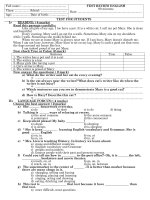
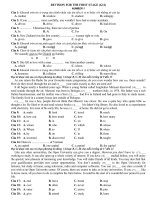
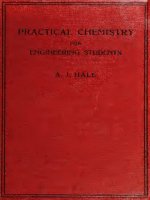

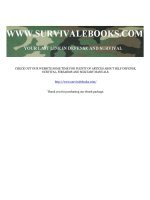
![ipad for kids [electronic resource] using the ipad to play and learn](https://media.store123doc.com/images/document/14/y/pi/medium_pip1401383474.jpg)
